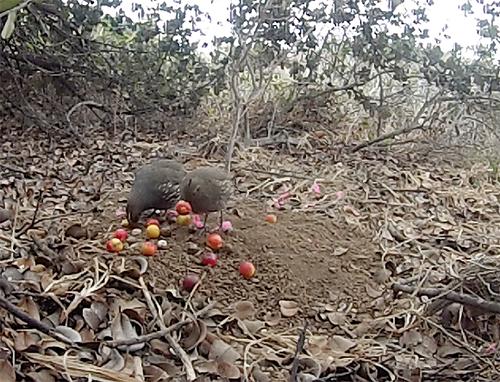Claudia Andrea Luna Morales
Habitat disturbance (HD) is a major threat to global biodiversity; through local species extinctions or reductions in population sizes, HD alters the structure of mutualistic interactions leading ultimately to the decay of ecosystem functions. The purpose of this study is to determine how HD alters the structure of seed dispersal networks in Mediterranean sclerophyllous forests of Chile, and how this affects ecosystem functioning. These ecosystems, which are among the 25 hotspots for biodiversity conservation worldwide, have experienced a dramatic increase of HD in recent decades, thus understanding how HD impacts biotic interactions and their functioning is imperative for their conservation. In order to archive this purpose, this project seeks to link three levels of biological organization: 1) assembly of ecological communities by environmental filtering, 2) establishment of interaction networks from the local communities and, 3) the mutualistic interactions that provide ecosystem function.

Photograph taken with camera trap of birds consuming the pulp of the fleshy fruit of Pouteria splendens, it is endemic shrub to Chile.
In this project, a model based on the characteristics of the species will be used (response traits to environmental conditions, coincidence traits that allow plant-frugivorous interaction and functional effect traits of frugivores), to understand the relationship between biodiversity and ecosystem functioning (BEF) and plant-frugivore interactions through different sequential processes that lead to their reorganization after habitat disturbance:
1) assembly of ecological communities by environmental filtration;
2) establishment of interaction networks of local communities;
3) mutualistic interactions that provide the ecosystem function.
In this way, understanding how habitat disturbance alters the structure of seed dispersal networks and, in turn, how this affects aspects of ecosystem functioning. The objectives are to analyze how habitat disturbance affects:
1) species richness, alters the traits of coincidence between plants and frugivores and, consequently, the structure of the network;
2) the eating behavior of frugivores by modifying interactions of mutualism to antagonists or exploitation and affecting the relative contribution of species to the networks;
3) the functional role of dispersant species, by distinguishing the components of dispersion effectiveness and its effect on plant regeneration.
This study will be conducted in four unaltered sites and four disturbed sites of the Mediterranean Sclerophyllous Forest of Central Chile. Within these sites the production of fruits will be quantified, the response traits (height / size of fruit and body mass), coincidence traits (size of the fruit, width of the corner commissure and opening of the snout), plan-frugivore interactions will be recorded through focal observations and recordings with trap cameras to develop matrices and ecological networks. The eating behavior (seed removal, pulp consumption and seed predation) of frugivores in unaltered and disturbed habitats will be identified to determine their contribution in the interaction networks in different ecological contexts. For plants with different seed sizes, the rainfall of seeds and seedling recruitment patterns will be quantified, quantitative contributions (total number of seeds removed) and qualitative (distance and site of seed deposition) will be estimated to develop dispersal networks of seed weighted by the effectiveness of the dispersers and, finally, the relationship between quantitative and qualitative contributions of fruit species and changes in BEF relationship will be determined. It is expected that environmental filtering negatively affects the richness and abundance of species due to habitat disturbance, which will affect the diversity of interactions, that would result in a reduction of the ecosystem function of seed dispersal in disturbed habitats.